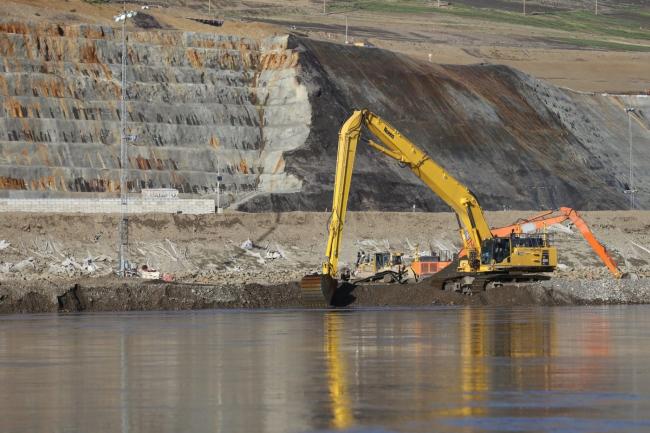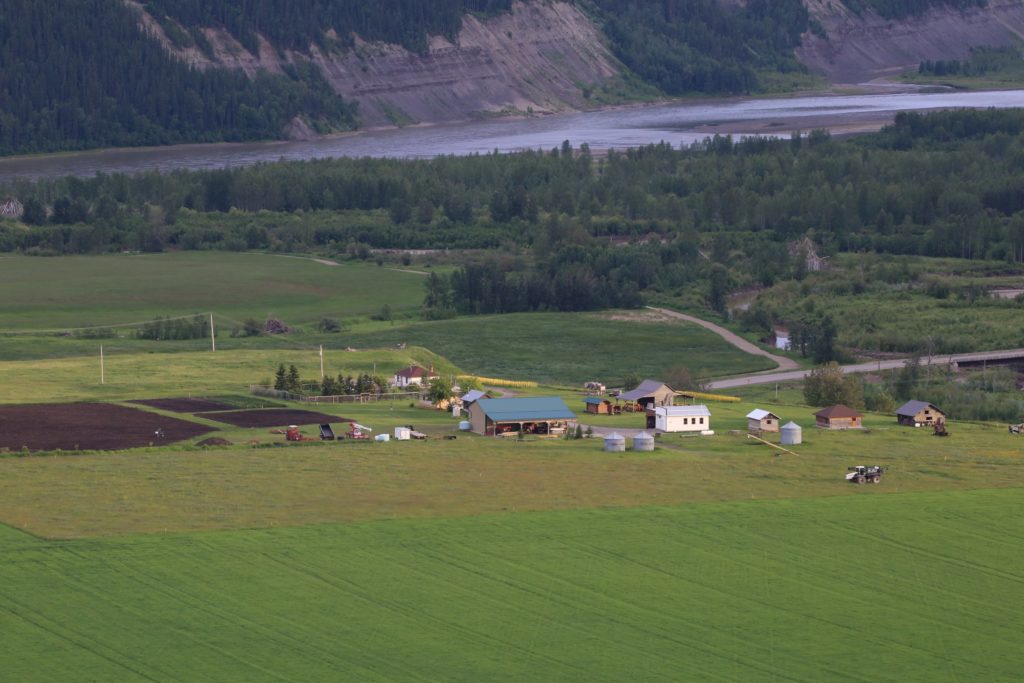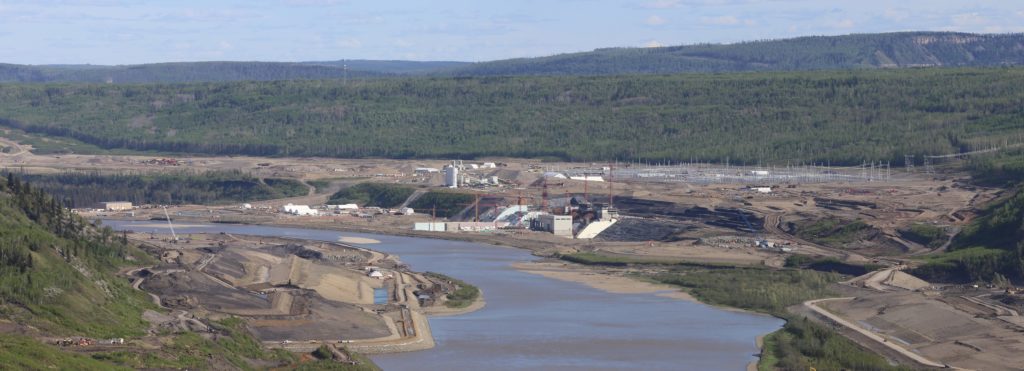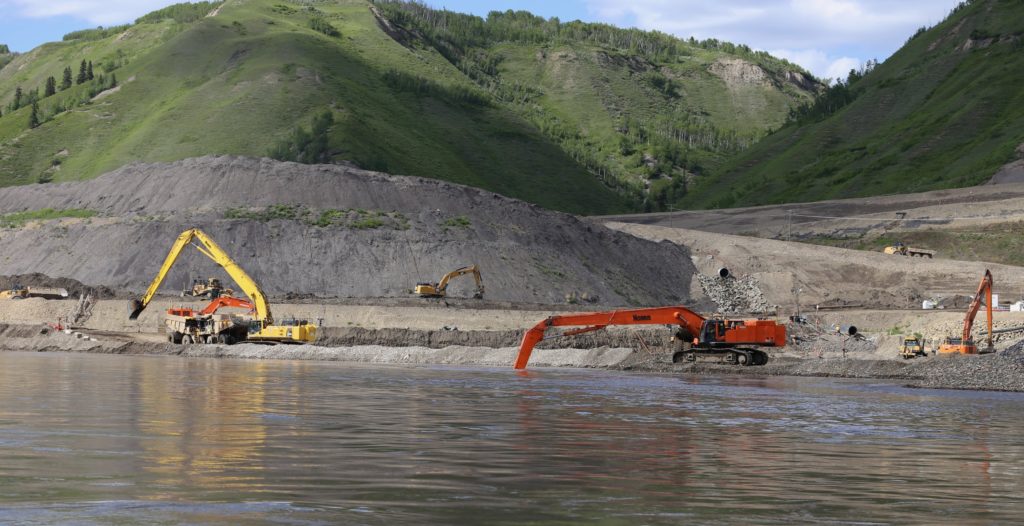Articles Menu

Jul 8, 2020
The B.C. government says an overdue report on the Site C dam will be available in the “near future,” fueling speculation that BC Hydro will use the COVID-19 pandemic as an excuse to announce a significant schedule delay and further cost overrun on a project that was in trouble long before the coronavirus struck.
“You look at all of this and it just adds up to something that doesn’t smell right,” said Ken Boon, president of the Peace Valley Landowner Association, which represents dozens of property owners affected by the Site C dam project.
At issue is a missing Site C quarterly report, which provides a public update on the project’s progress and risks for the three-month period ending on Dec. 31, 2019.
Normally the document — which includes a yearly report from the Site C dam Technical Advisory Board, outlining its key findings — would have been submitted to the B.C. Utilities Commission in early April.
But commission chair and CEO David Morton said he has still not received the report.
“We have been in contact with [BC] Hydro about it and we have been told that the report has been delayed because of COVID,” Morton told The Narwhal. “We are anxious to get it.”
BC Hydro also has not submitted the quarterly Site C report for the period ending March 31, 2020, Morton confirmed. That report would normally be available in early July.
In an emailed response to questions, the B.C. Ministry of Energy, Mines and Petroleum Resources said the two quarterly reports have been delayed “due to the COVID-19 pandemic and the evolving impacts of the pandemic on the project.”
The ministry said the reports will be released soon and will include an “update” on the Site C project schedule, budget and diversion of the Peace River.
Diverting the Peace River early this fall, as scheduled, is critical for building the dam structure and completing the project in 2024 without additional cost overruns.
BC Hydro has said missing the river diversion deadline would delay the project by about one year and significantly add to the dam’s cost, which has already ballooned from $6.6 billion, when the project was announced in 2010, to $10.7 billion. Ratepayers will only begin paying for the project once the dam generates power.
The energy ministry did not respond to a question asking if the Site C project is still on schedule and within its revised budget, as previously asserted by the government.
The quarterly reports give British Columbians a glimpse of the major financial risks associated with the largest publicly funded project in the province’s history. They provide details about the project’s expenditures, setbacks and prognosis for on-time completion that are not otherwise available due to the unusual secrecy surrounding the project.
Boon said using the pandemic as an excuse for delaying release of the reports “doesn’t make any sense.”
“If they’re capable of carrying on building the project — they called the Site C project an essential service — they should also be able to carry on doing their quarterly reports,” he said in an interview.

Part of the third-generation Boon family farm will be flooded for the Site C dam and most of the rest will be lost to the relocation of a provincial highway for the dam. Photo: Don Hoffmann
Harry Swain, chair of the joint review panel that examined the Site C project for the federal and provincial governments, said it is “ridiculous” to blame the delay on the pandemic, noting that writing a quarterly report involves office work that can be done at home, which can be approved by the necessary executives, also working from home.
“It is a specious argument,” said Swain, a former federal deputy minister and Canada’s first senior advisor for renewable energy.
“A report like this can be compiled within a week or 10 days of the end of the relevant reporting period. It’s not very difficult to do.”
The last Site C quarterly report, which covered the three-month period ending on Sept. 30, 2019, positioned the project for more cost overruns and schedule delays. That report was released on Jan. 15, two months before the pandemic was declared and much of B.C. shut down.
Some of the more serious issues the report detailed include “significant cost pressures and/or budget increases” incurred after the NDP government approved an additional $2 billion for the project in December 2017, and a September 2019 cost risk analysis showing that the revised Site C dam project budget was “under pressure” — five years before the dam’s projected completion date.
“It said to me that they were setting up for some bad news to be coming in some future quarterly reports,” Boon said.
“Now we have these two quarterly reports that have been delayed for so long, and the word on the street is that there are problems with the project. To me, it all adds up to that they’re just trying to delay as long as possible revealing bad news and embarrassing this government.”

A view of the Site C dam construction site in July 2020. The dam will flood 128 kilometres of the Peace River and its tributaries, including First Nations burial grounds and sites of cultural and spiritual significance. Photo: Don Hoffmann
Swain decried the lack of transparency, pointing out that BC Hydro is accountable to the utilities commission and the government.
“Neither have insisted on reporting, or at least the publishing of any reports. I would presume that the B.C. government or the B.C. Ministry of Energy, Mines and Petroleum Resources is fully informed of what’s going on, and has decided for whatever reason not to make it public.”
BC Hydro announced in late May that the two river diversion tunnels have been completed. But Boon pointed out there are significant issues with one of the tunnels and other infrastructure necessary for river diversion, including coffer dams, is not in place.
In its last Site C quarterly report, BC Hydro acknowledged, for the first time, that the fast-approaching and already revised timeline for completing the river diversion tunnels was “at risk,” noting issues with tunnel liner concrete that included falling pieces of concrete chunks as large as 18 metres by three metres.
Boon also said a five-kilometre conveyor belt to carry fill for the dam structure has been beset with operational problems. Part of the conveyor belt was also recently underwater following heavy rainfalls that caused multiple landslides in the Site C project area, which is notorious for its slope instability, sparking calls for an independent safety review of the dam.
The conveyor belt was supposed to be operational by the summer of 2019, noted Boon, who lives with his wife Arlene in their third generation family farmhouse, which was expropriated for the dam.
“We’re a year past that now and that’s not happening. Those conveyor belts are not running. And they need those conveyor belts to move the material that’s going to build the dam. It would appear that they’re obviously behind schedule with that. What is the story with that? Once again, we’re left in the dark.”
Boon said he had hoped the public would be kept better informed about the project following Premier John Horgan’s 2017 announcement that his government would establish a Site C project assurance board, to ensure the dam would be completed on time and without further cost overruns.
“We were led to believe we’d have better accountability and transparency,” Boon said. “We’re not getting any of that from this government.”
Minutes and reports from the assurance board have been kept secret by the NDP government, which will also not reveal the names of board members.
“The individual members, minutes and reports of the project assurance board are not available publicly in order to ensure the protection of sensitive information that, if released, may harm financial, economic, business and other interests related to the project, and to protect personal privacy,” the energy ministry said in an email to The Narwhal.

A Site C dam work crew in July 2020. The Peace River Valley is notorious for its unstable slopes and has a history of large landslides. Photo: Don Hoffmann
Morton of the B.C. Utilities Commission said the commission can ask for the Site C quarterly reports but does not have the power to order them.
“We have limited jurisdiction here because we didn’t approve the project.”
Normally, the watchdog commission would review BC Hydro’s proposed capital projects, such as the Site C dam, to determine if they are in the public interest.
But the former Liberal government changed the law to exempt the commission from reviewing the decision to build the Site C dam, heralded by the government as a legacy project, while former B.C. Premier Christy Clark famously vowed to push construction “past the point of no return.”
The utilities commission rejected the Site C project in the early 1980s following a two-year review. BC Hydro’s board of directors rejected the project when it was proposed again in the 1990s, saying the dam was too expensive and environmentally destructive and B.C. did not need the energy.
A UBC study subsequently found the project would have more significant adverse environmental effects than any project ever examined in the history of Canada’s environmental assessment act.
Swain said the utilities commission could “quite literally, write a letter demanding the reports.”
“It could then, if they’re not delivered, issue a press release saying we’ve asked for these reports, they haven’t been delivered. The idea that they are not being open with the public on that is disturbing.”
He said BC Hydro has established “a pattern of behaviour” to file reports very late, including its annual reports.
“If they were a private corporation, regulated by a securities commission, this would not be allowed.”
BC Hydro’s most recent annual report, which provides information about the overall financial health of the publicly owned utility, has not been released.
Boon said he and other Peace Valley landowners remain hopeful that continuing geotechnical issues and escalating costs will make the Site C project uneconomical.
“If things go sideways enough on this project, I don’t think it’s too late to kill it,” he said.
“With all the rain we’ve been having the trees are growing back about as fast as they can cut them down. Nature will restore this valley.”
“I don’t think it’s too late for this project to die of natural causes.”
Sarah Cox is an award-winning author and journalist based in Victoria, B.C. She got her start in journalism at UBC’s…
[Top photo: Part of the Site C dam worksite in July 2020. The $10.7 billion dam is the largest publicly funded project in B.C.'s history. It will flood 128 kilometres of the Peace River and its tributaries, in the heart of Treaty 8 territory. Two Treaty 8 First Nations are awaiting court dates for civil claims asserting that the Site C dam, along with two previous dams on the Peace River, violate their constitutionally protected treaty rights. Photo: Don Hoffmann]